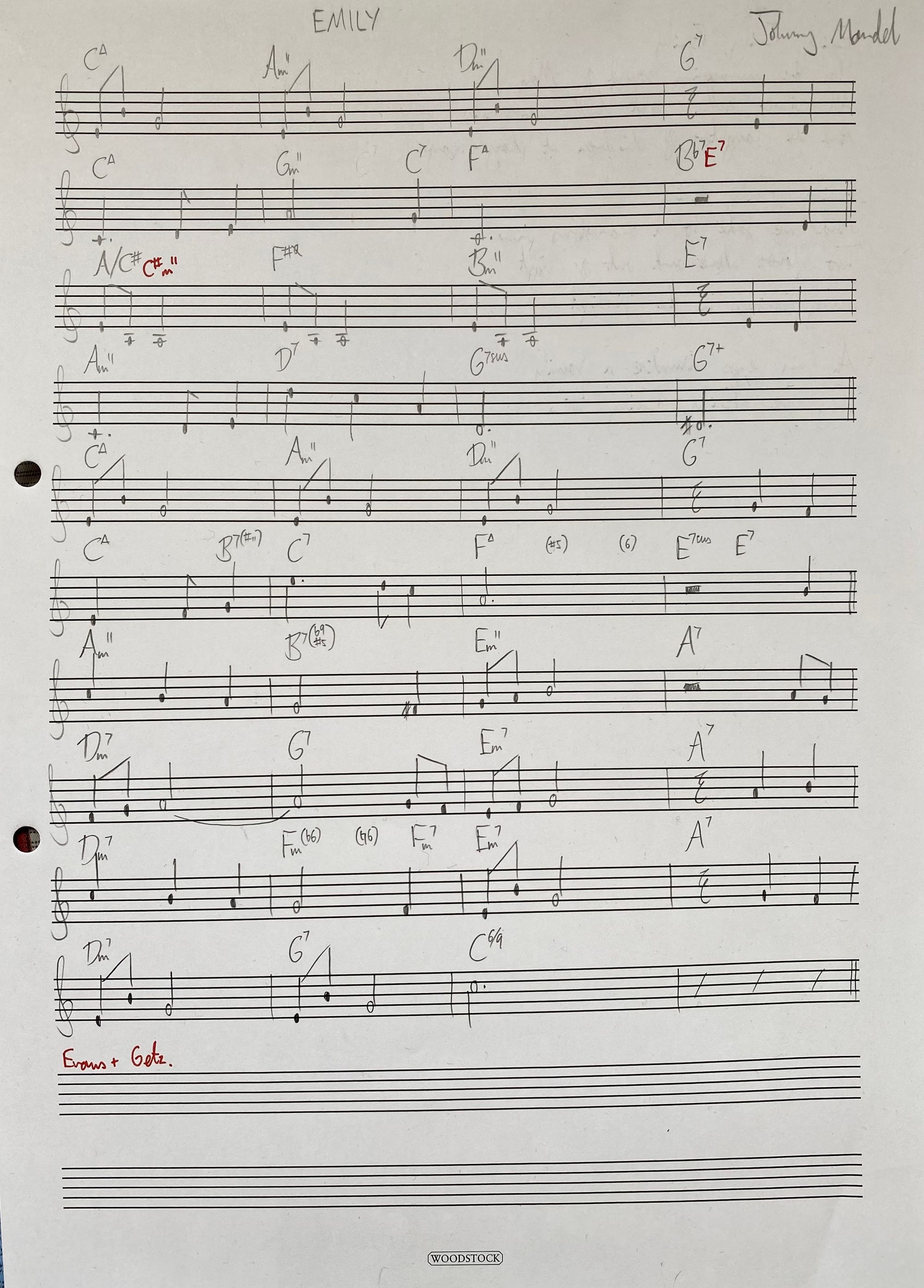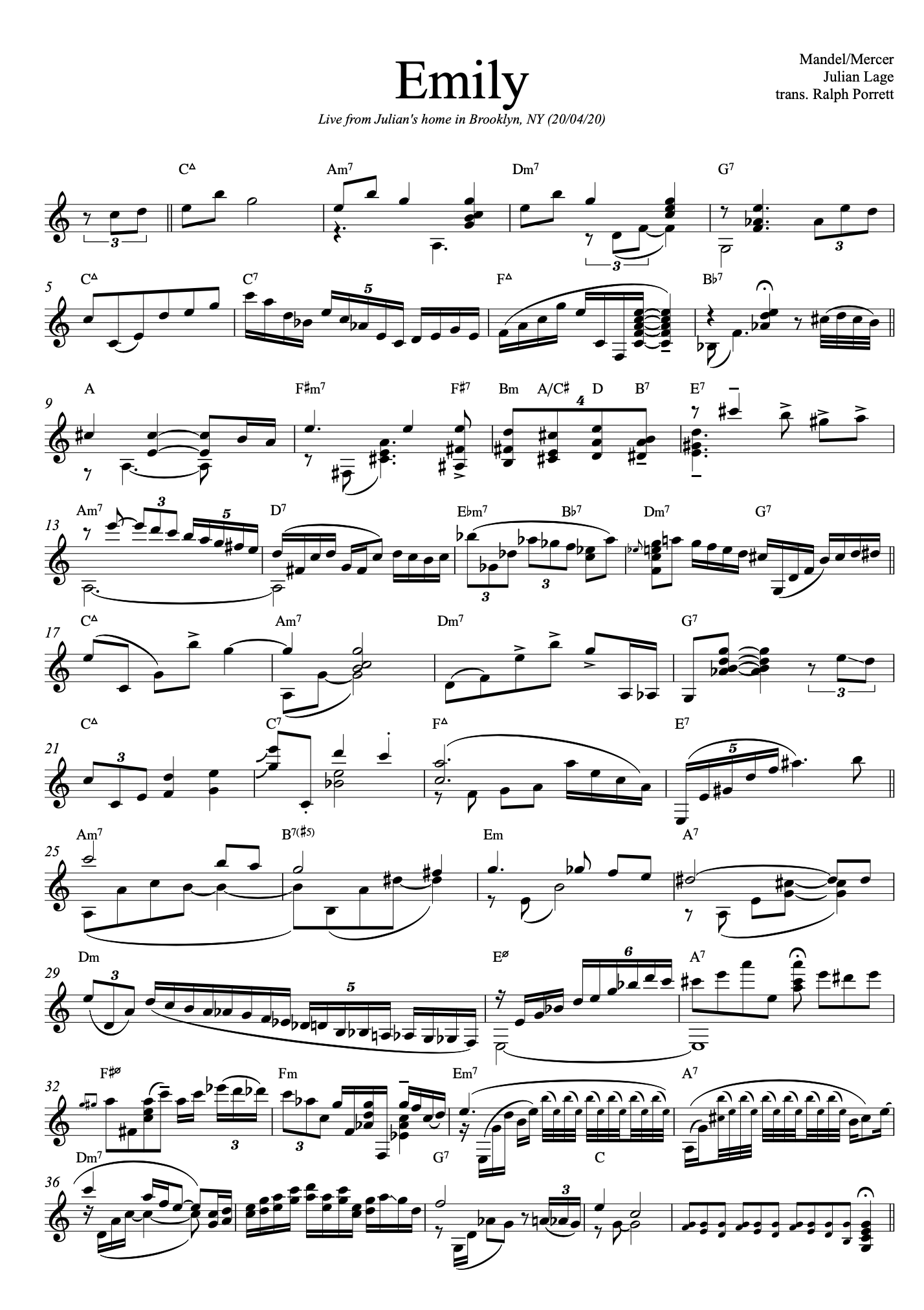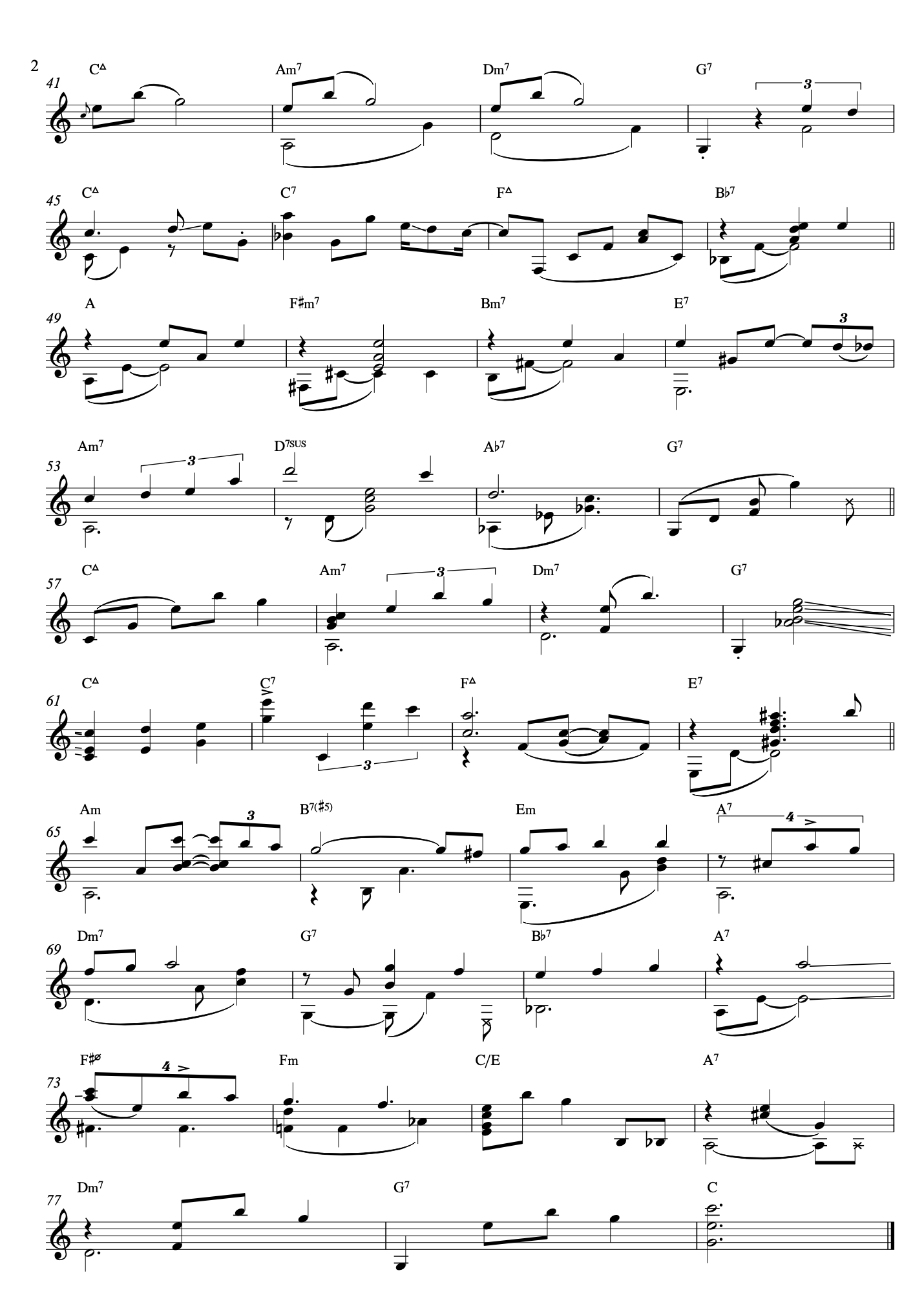02/09/21
🎧 Tune
How can the opening of Emily not draw you in? Johnny Mandel's childishly simple 3-note phrase catches your ear and doesn't let go. The motif, repeated 3 times, is set in motion by its accompaniment. At first the melody spells out chord tones: 3rd, 7th and 5th of C major. Then in bars 2 and 3 the harmony shifts, and the melody becomes more colourful. Extensions of the chords are introduced: 9th of Am11 and 13th of Dm11. Changing the harmony while repeating a phrase provides the audience with new perspectives.
Modulating to the foreign key of A major in bar 9 could at first seem stark. However, this radical tonality compliments the new theme. Characterised by a descending perfect 5th, the answering melody is symmetrical with the opening phrase. Mandel's obscure key change simply sounds refreshing because the new melodic content is so obviously related to the rest of the tune. Could this be evidence to suggest that melody is more important than harmony? Is harmony the same as melody?
Emily's original chord progression contains a couple of characterful quirks. These moments breathe life into the composition and it's unfortunate that some jazz musicians leave them out. In bar 8 for example, E7 sometimes replaces Bb7, robbing the listener of Mandel's intended cadence. Bar 34's internal harmonic movement is another forgotten moment. The contrary motion between melody and harmony lines converge to the starting note (E) of the last theme, making the final phrase particularly strong.
Great American Songbook compositions share a similar harmonic palate. Their quirks are essential to their identity! The subtleties described above set Emily apart from the swamp of jazz standards, making it a treasure in the collection.

🪕 Twang
I always see learning jazz tunes as an opportunity to discover solo guitar recordings. For Emily, I didn't have to search far. During the first lockdown, Julian Lage - Blue Note Records artist - shared a few jaw droppingly beautiful clips from his home in Brooklyn. Here's my transcription.


🌞 Thought
Recently, Rick Beato and Pat Metheny filmed a discussion about improvisation. Metheny shares his insights on melodic development: an essential musical component which isn't talked about enough. He likens improvisational narrative to conversation. Unexpectedly jumping from topic-to-topic mid discussion rarely leads to any meaningful outcome - but when thoughts are fleshed out over time, ideas are born.
Johnny Mandel muses over a 3-note fragment for 40 bars, composing an unbated, unified whole.

